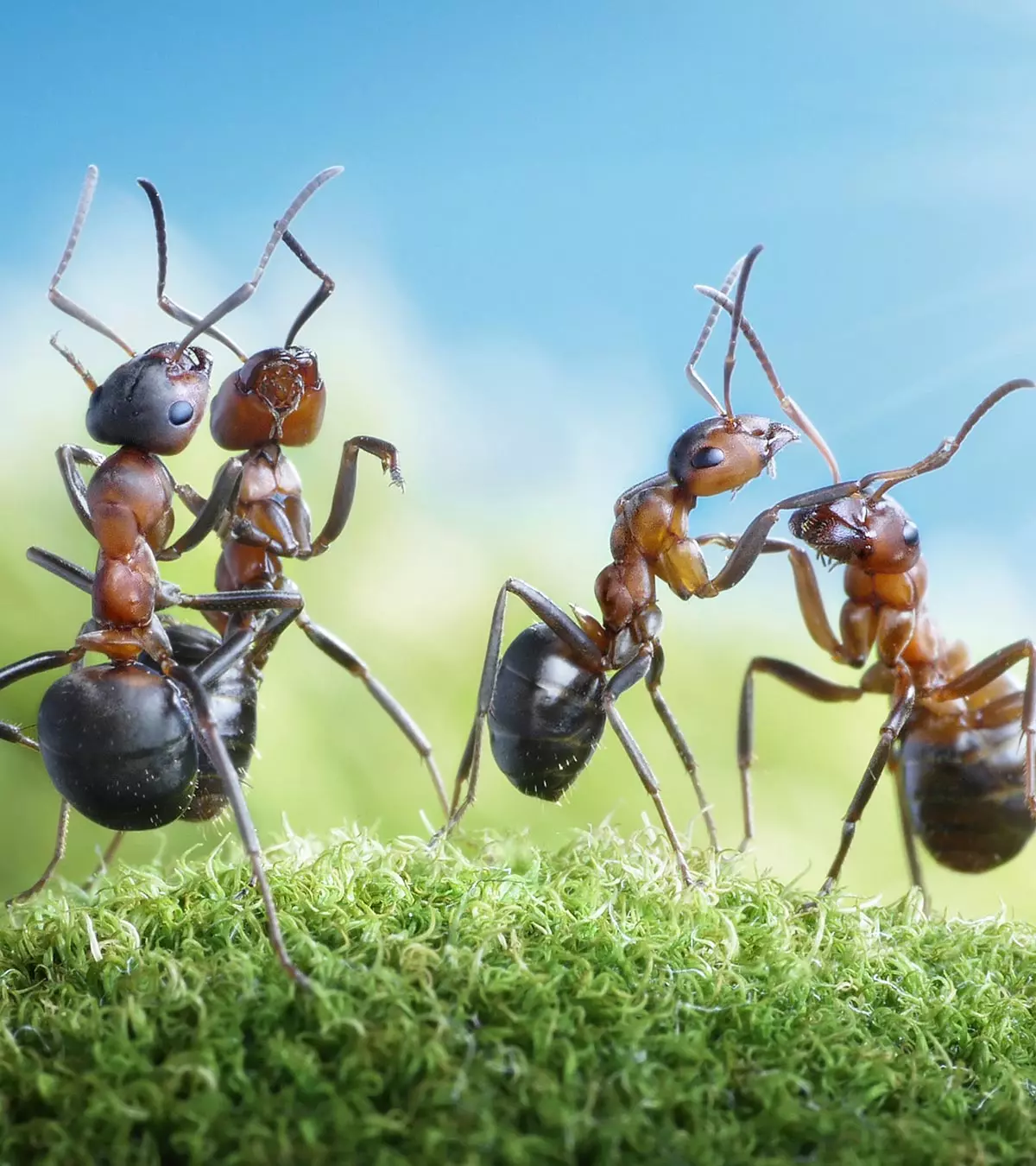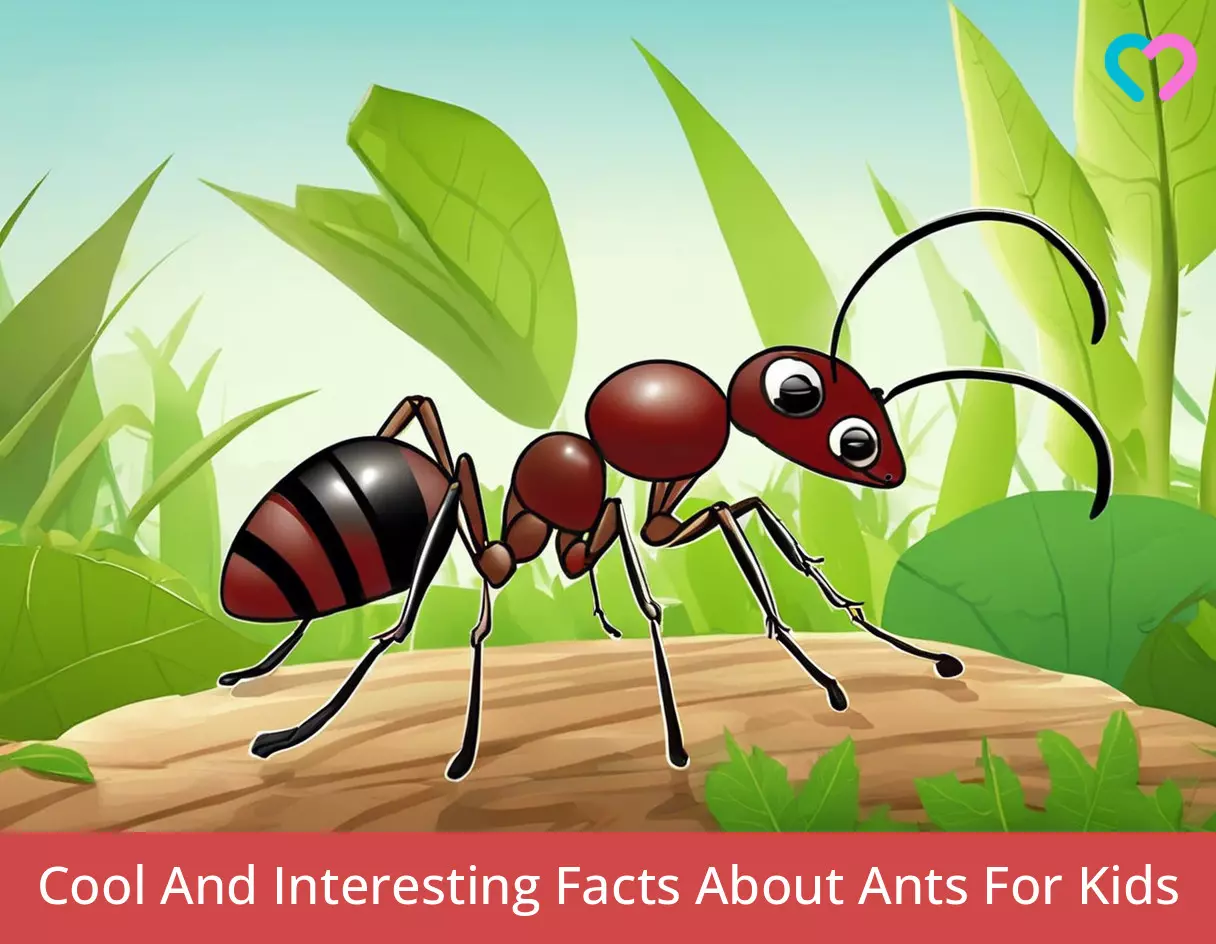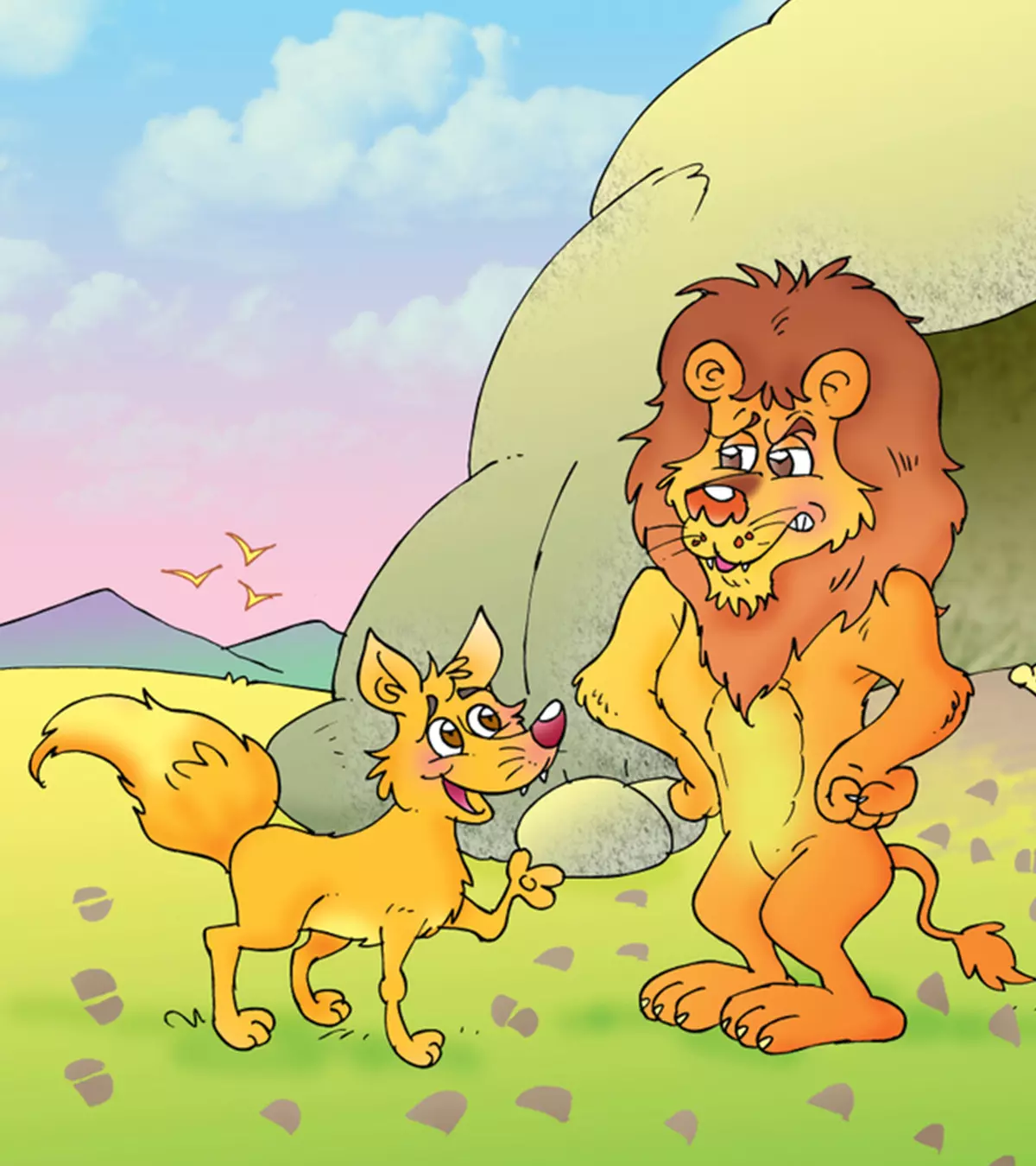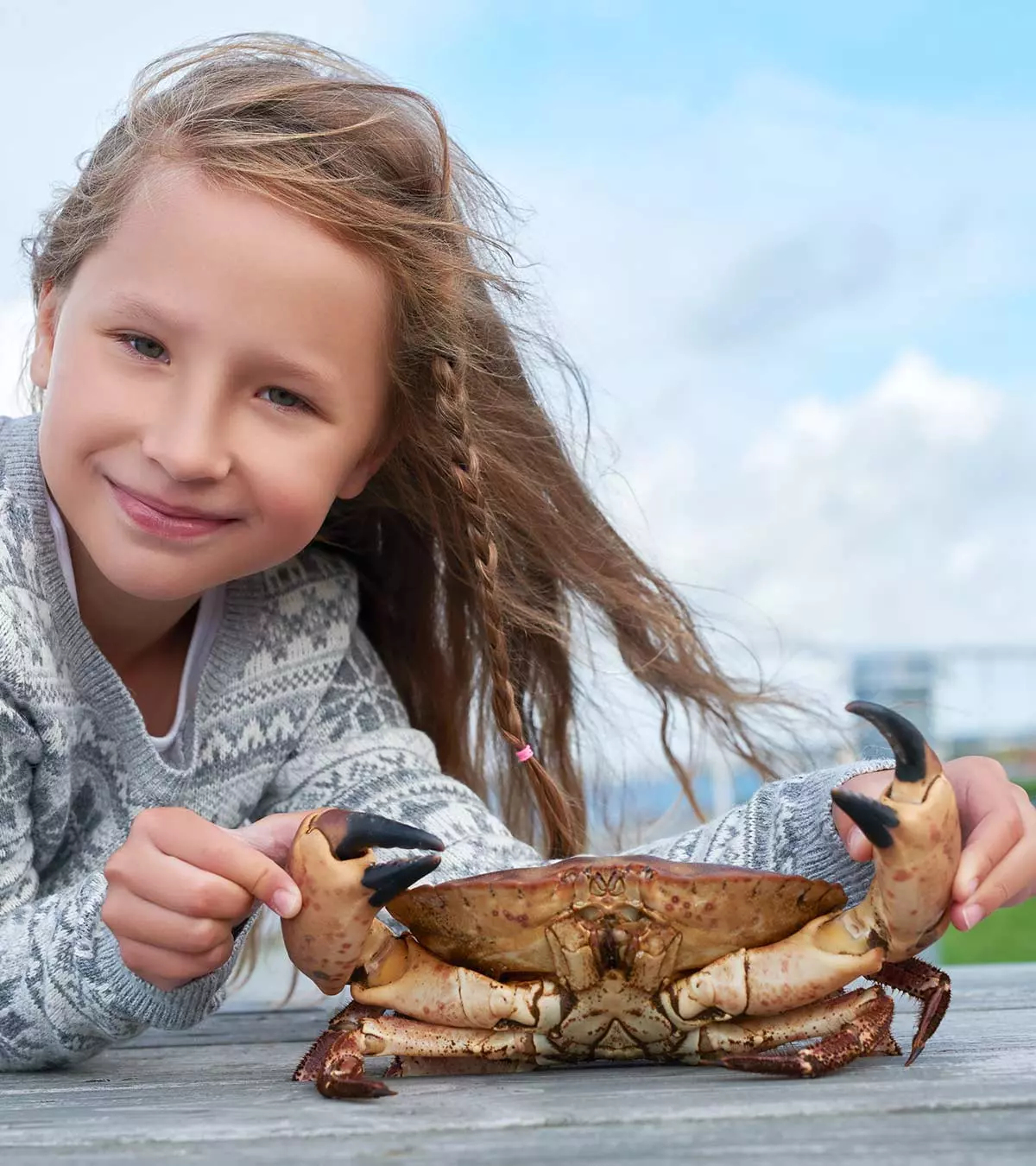
Image: Shutterstock
Every one of us has heard about Aesop’s fable named The Ant and the Grasshopper. This story highlights many interesting things about ants, and there is a lot more to know. We have put together some interesting facts about ants for kids in this post. These tiny creatures prefer to live in colonies and are very hardworking. They also show extreme dedication towards their work and are disciplined in whatever they do. Despite their tiny body size, they are immensely strong, and if we observe them, there is a lot that we can learn from them. Read this post for the interesting facts on ants and share them with your kids.
Key Pointers
- Ants live almost everywhere globally except in extremely cold regions (such as Antarctica) and volcanic regions (such as Hawaii).
- They build their nests with grains, dust, and sand. These nests have different chambers for various purposes.
- Ants have little openings called spiracles all over their body to help them inhale oxygen.
Interesting Information About Ants For Kids
Anatomy of an ant
Every living being on our planet has a unique body structure that helps in its adaptability to its environment. Similarly, the body of an ant can be segmented into three main parts, namely the head, the thorax, and the abdomen.
- Head: The head of an ant comprises its sensory organsiSpecialized organs that help an organism receive and respond to external stimuli. . Ants have excellent vision because they have compound eyes, meaning they have multiple lenses attached to each eye. Its mouth has an additional part known as the ‘mandibles’ that helps it hold, cut, and bite things. It does not have ears or a nose but two antennae at the top of its head that help it touch, feel, smell, and taste. It has a brain that helps it process the signals sent through these sensory organs.
 Quick fact
Quick fact
Image: IStock
- Thorax: The middle part of an ant is known as the thorax or mesosoma. All of its six legs are attached to this part. Each leg has two hooked claws that enable it to catch and hold things. Some queen ants and males may even have a pair of wings. However, it is mostly shed during or after mating.
- Petiole: The petiole is the part between the thorax and the abdomen of an ant. It can be compared to a human waist. It has a hinge-like function, which grants the ant the flexibility to twist and turn its body.
- Abdomen: The abdomen of an ant holds its heart, digestive system, and reproductive organs. Certain species of ants have stingers on their abdomen that shoot venom into their enemies.
- Exoskeleton: Made of a fibrous substance called chitin, the exoskeleton of an ant is the tough, waterproof body covering of an ant. This covering protects the muscles and soft tissues of the body.
 Did you know?
Did you know?How do ants live?

Image: IStock
Ants live in collective large groups known as colonies. Each colony consists of a single queen, drones, and worker or soldier ants. The queen is the largest ant of the colony. She is the mother of the other ants and controls the whole colony and lays eggs to produce offspring. The drones are the only fertile male ants that help the queen produce eggs. Lastly, the worker ants are the ones that collect food, excavate and build nests, and protect the colony. The majority of the ants in a colony are these soldier ants.
Where do ants live?
Ant colonies can be built inside specific outdoor trees or plants. They can build colonies in wood and even underground. On the ground, they build their own little mounded ant hills. They can basically live anywhere except in extremely cold regions, such as Antarctica or an icy mountain.
What do ants eat?
Ants are foraging omnivores, that is, they can eat both plants as well as animals. An army of ants can easily carry a dead insect several times larger than itself and take it to its nest for scavenging. They are also listed among the top arthropod predators, which are considered a keystone species in tropical ecosystems.
How do ants breathe?
Ants take in oxygen through openings known as spiracles positioned along the sides of their bodies. These spiracles connect to tubes that distribute oxygen to nearly every cell in the ant’s body. The ant’s motion assists in oxygen circulation through these tubes, and the resulting carbon dioxide is expelled through the same network of tubes.
How do ants reproduce?
During specific seasons, a queen ant lays eggs that give rise to new queens and males. Upon the queen’s birth, she possesses wings and departs the nest to mate. During this period, males also have wings, and the queen and a male engage in mating. The queen locates a suitable spot to burrow, establishing a secure nest where her wings are shed. Promptly, the queen initiates egg-laying, leading to the larvae hatching and nourishing the larvae with her saliva. Eventually, the larvae undergo the cocoon-spinning phase, transitioning into the pupa stage. After a few weeks, the new ants emerge.
30 Facts About Ants For Kids
For children who are glued to the National Geographic channel for their daily dose of animal and insect information, here are some interesting facts about this small but powerful and intimidating insect.
- Ants are the descendants of the insect group Hymenoptera, an order of insects that includes wasps, sawflies, and bees.
- Ants have colonized almost every part of the world except the extremely cold areas such as Antarctica, Greenland, and Iceland. They also avoid volcanic regions such as Hawaii and Polynesia.
- The size of a colony of ants varies from a few dozen ants to millions of ants.
- Ants build their nests with grains of dust and sand. The nests contain multiple chambers used for different purposes, such as storing food and eggs and resting.

Image: IStock
- An average ant can easily carry ten to 50 times its body weight.
- The neck joint of a common American field ant can withstand pressure up to 5,000 times its weight forming a formidable armor (1).
- Researchers have indicated that there are about 12,000 different species of ants in the world (2).
- When out looking for food, ants leave behind a pheromoneiA substance released by an organism that serves as the means of species-specific communication. trail (scent trails) that allows other ants to follow them and also return to their nest following the same trail.
- Ants do not have a nose or lungs. They have little openings, known as spiracles, all over the body, which allows them to take in oxygen and give out carbon dioxide.
- The entomologistiAn individual who specializes in studies related to insects. Ted Schultz stated that the presence of ants across the world is “arguably the greatest success story in the history of terrestrial metazoaiGroup of animals that have multiple cells differentiated into tissues and organs. .”
- Ants do not generally replace their queen ant. In case the queen dies, the rest of the colony dies within a few months after her.
- In a species of fire ants, the males and females can clone themselves to create a whole new male and female gene pool (3).
- Ants are the only creatures, besides humans, that practice farming. They raise aphidsiTiny sap-sucking insects. in their nests and keep them protected so they can get the sugary sap that these tiny insects secrete.
- The muscle to body ratio of ants is larger than that of humans.
- Ants can capture ants from other colonies and force them to do their work as a sign of dominance.
- A species of ant known as ‘Pheidole harrisonfordi’ is named after the Hollywood actor Harrison Ford to honor his efforts toward tropical conservation.
- The workers in an ant colony are all sterile females.
- Male ants are only required for mating. Once their purpose is served, they die.
- Ants are known for their resilience and have even survived the Ice Age.
- Guinness World Records has named the Australian bulldog ant (Myrmecia pyriformis) as the world’s most dangerous ant. It is known for using its strong jaws and sting simultaneously in an attack. It has killed at least three people since 1936.
- In the Amazon rainforest, the fire ant colonies create a raft with their bodies by linking their legs together. This enables exploring the forest as they move down the river.
- A queen ant can live for around two to 20 years. A queen ant of the Lasius niger species is known to have lived for more than 28 years in captivity, the longest ever recorded for a queen ant (4).

Image: IStock
- Some soldier ants steal ant eggs from other colonies. When the eggs hatch, these newborn ants are used as slave ants.
- Carpenter ants get their name because of their ability to dig through wood to build their nests.
- The bullet ant has an extremely potent sting that can even paralyze a tarantula.
- Ants have not one but two stomachs. The other stomach is to feed others.
- When millions of ants live in a single colony, it is known as a ‘supercolony.’ A supercolony can house up to a swarm of 300 million ants.
- Researchers have indicated that an ant brain contains around 250,000 brain cells (5).
 Quick fact
Quick fact- Ants do not have blood but a liquid called ‘hemolymph’ that facilitates the movement of nutrients around the body.
- Recent studies have shown that the fungus-growing ants have developed symbiotic relationships with aphid honeydew and microbes like bacteria.
Frequently Asked Questions
1. Do ants sleep?
No, although ants do not sleep but take power naps. An average worker takes approximately 250 naps daily, each lasting slightly more than a minute.
2. Do ants have teeth?
Yes, ants typically have two mandibular teeth attached to the outside of their mouth. These teeth are used by ants for self-defense, carrying objects, or even grooming themselves.
3. Do ants pee?
No, ants, like many other tiny insects, don’t pee. Instead, they excrete all the liquid in the form of uric acid.
4. Do ants need sunlight?
Most ant species do not require sunlight, and their caves are sometimes in complete darkness. They may, however, use sunlight as photoreceptorsiSpecialized sensory cells present in the eye that receive light and convert it into electrical signals, crucial for vision. to detect food.
5. How fast can ants fly?
Every ant colony has some flying ants whose sole purpose is to find a new home. It is known that Saharan silver ants are the fastest, with a locomotor speed of 3.1 km/h.
6. How many colors can ants see?
Ants can see ultraviolet, blue, yellow, and green colors. Under certain conditions, they can also detect the frequency of red color.
7. Can ants see in the dark?
Yes, most insects, including ants, have night vision. They have photoreceptor cells in their eyes that help them detect light frequencies at night.
8. Can ants swim?
Ants cannot swim, but they can repel water to float on the top. Therefore, they are called foragers.
Ants are social creatures known for their industrious nature, discipline, and strength. Cooperation through division of labor is a characteristic feature of an ant colony, where each type of ant has a specific role and responsibilities. In addition, they play a crucial role in balancing our ecosystem by feeding on and being prey to other animals. Hence, the next time your child points at an ant, intrigue them with these fascinating facts about ants for kids. Teaching them about the anatomy, eating patterns, and stamina of ants could pique your child’s interest and encourage them to learn more about these insects. You can also share these ant coloring pages with your child to make learning more fun.
Infographic: Know More About Some Atypical Ants
Ants are mostly considered harmless for humans, but some species can give you painful stings. They may also attack small birds and other creatures. If you ever come across a weird-looking ant, refer to the infographic below that lists some unusual varieties of ants and their unique features. Illustration: Momjunction Design Team
Illustration: Cool And Interesting Facts About Ants For Kids

Image: Stable Diffusion/MomJunction Design Team
Discover 10 amazing facts about ants that every kid needs to know! From their incredible strength to their complex social structures, this video will explore the fascinating world of ants.
References
1. Ants Can Lift up to 5,000 Times Their own Body Weight; Entomology Today
2. 10 Cool Facts About Ants; National Geographic Kids
3. Fire Ants Start a Sexual Revolution; American Association for the Advancement of Science
4. Chapter 34: Longest Adult Life, Book of Insect Records, University of Florida
5. How Small Is an Ant’s Brain Compared to an Elephant’s Brain?; National Center for Families Learning
Community Experiences
Join the conversation and become a part of our nurturing community! Share your stories, experiences, and insights to connect with fellow parents.
Read full bio of Beth Sullivan
Read full bio of Harshita Makvana
Read full bio of Deepa Thomas
Read full bio of Kavita Kankani
















